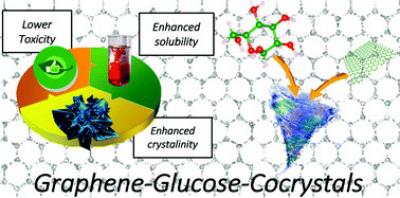Scientists in Spain and Italy have developed a new approach for making few-layer graphene using a mechanochemical technique that exfoliates graphite with carbohydrates. This method could pose a "greener" alternative to the common method that involves exfoliating graphite using sonication that requires the use of toxic solvents.

A major drawback of using graphene for biological applications is its poor stability in aqueous systems. "Graphene is a strongly hydrophobic material, which aggregates in water and precipitates. To study graphene in biological media, it needs to be dispersed in aqueous solutions, without the use of toxic detergents" explains Ester Vázquez from the University of Castilla-La Mancha, Spain. Now, Vázquez’s team has devised a new environmentally-friendly method for making graphene that could also make it easier to investigate in biological studies.
"Many groups use mechanochemical treatments for the exfoliation of graphite. The novelty of this work is in the fact that they use sugar instead of NMP and DMF, which are toxic compounds and have been shown to have harmful side effects to humans" remarks Andrea Ferrari, director of the Cambridge Graphene Center, UK. "This approach is promising in that it allows you to exfoliate graphite for interactions with cells".
Vázquez predicts many potential applications for her team’s method: "We could incorporate graphene in hydrogels and generate 3D scaffolds able to host nerve cells, making our system ideal for growing 3D cellular scaffolds".